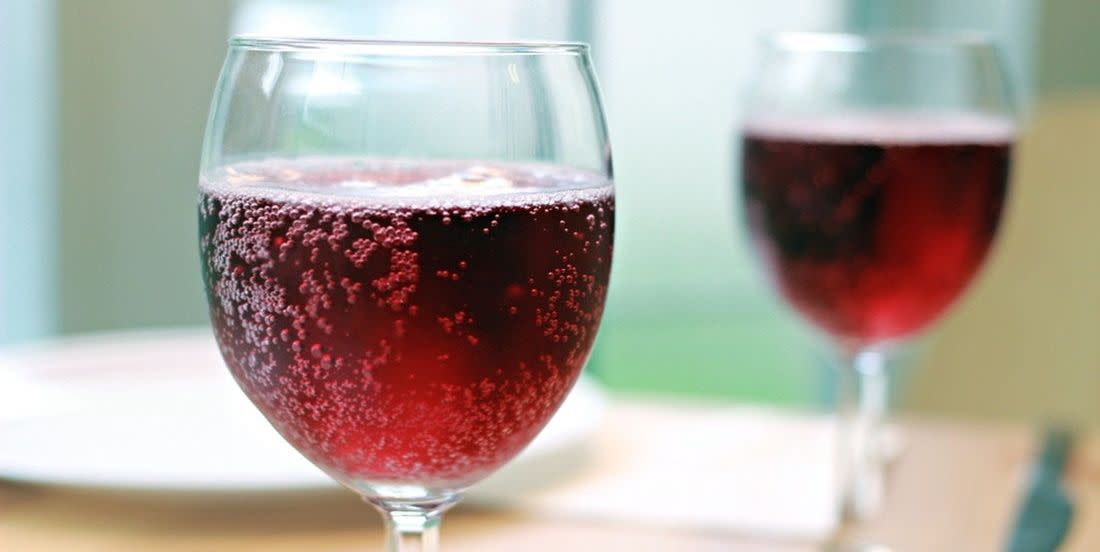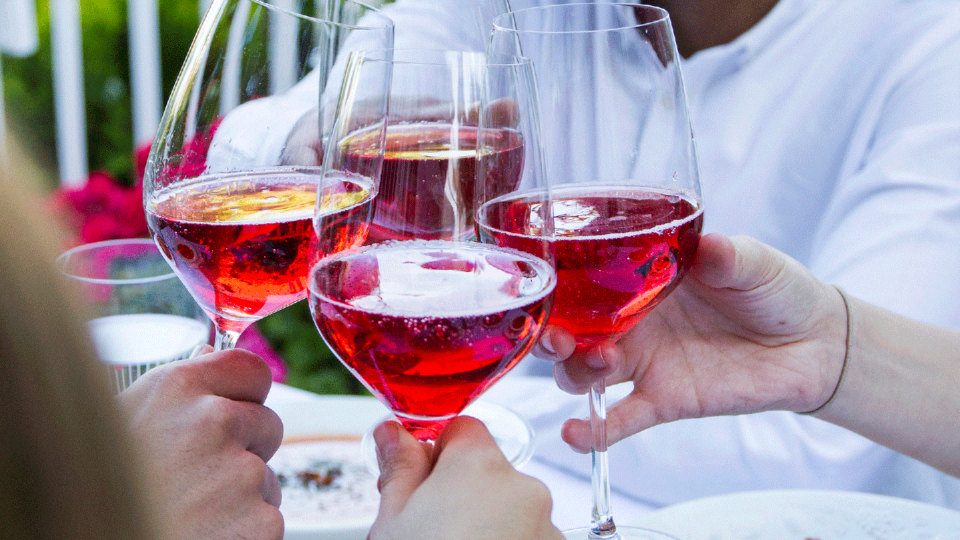What Is Lambrusco and Why You Need to Drink It This Summer

If you're obsessed with red wine (aren't we all?), you probably drink less of it in the summer and more of it in the winter. That's just how it goes: a glass of Pinot sounds better when cozied up by a fire than when sweating by a pool. Needing a warm-weather alternative is precisely why rosé sales grew a whopping 53% when it first became so popular in 2017—it's pink water for summer. Well, we've found an even better bottle to reach for: Lambrusco.
What is Lambrusco?
It's a fruit-forward sparkling red—from the Italian Lambrusco grape—always served chilled. Bubbly and ultra-refreshing, it's Italy's most exported wine. Some historians believe Lambrusco grapes were the very first to be turned into wine in Italy. Grown in the Emilia-Romagna region, it's a family of grapes. By the end of the 1960s, the drink had spread in popularity to nearly every corner of the country.
The Emilia-Romagna region is known for many varietals, but is most famous for Lambrusco. There are a few official DOCs (Denominazione di Origine Controllata) in the provinces of Modena (where the wine is super popular among locals), Reggio Emilia, and Parma. Of some 60 Lambrusco grape varieties, 13 are native to this region of Italy. Those considered the best are all grown in DOCs in Emila-Romagna: Sorbara, Salamino, and Grasparossa.
Lambrusco di Sorbara: This Lambrusco has a floral-forward, concentrated flavor. It's lightest in color of the Lambrusco grapes.
Lambrusco di Salamino: This version has a deeper ruby color and purple fizz. Still fruity, this one is also highly fragrant. Available in both semi-sweet and dry varieties.
Lambrusco di Grasparossa: Fuller bodied and higher in alcohol, this is the most tannic (high in the chemical compounds found in the skins, seeds, and stems of grapes) and robust Lambrusco variety.
If you're shouting "OLD NEWS! Lambrusco's been around forever!", you're kind of right. BUT, in America, it wasn't always so great. Lambrusco wines can range from very sweet (and syrupy) to dry. In the 1970s, Italy began exporting sweet Lambrusco to the States, banking on American consumer's penchant for sugary soft drinks. It wasn't until the mid-aughts that dry Lambrusco (the stuff you'll always find in our fridge) finally made its way to domestic wine shops. Dry Lambrusco is having a real moment. Here's why you should be drinking it:
1. It's sparkling—but not too sparkling.
Unlike champagne, Lambrusco isn't so full of bubbles that you don't want to gulp it down. It's frizzante—slightly sparkling—and won't make your throat burn.

2. It goes perfectly with ALL food.
Gone are the days of someone side-eyeing you at a restaurant for ordering Sauv Blanc with steak. The increasingly popular dry, crisp Lambruscos are an excellent wine for all kinds of food. Italian food is a given (pastas, salty cheeses, cured meats), but its fizz also helps cut through fried foods like fried chicken and French fries. We also love to pair it with heartier meats like grilled steak and roast chicken. The best thing about Lambrusco? You don't need to limit it to savory foods—its fruity notes make it the perfect partner for dessert, like a peach galette or anything chocolate.
3. It's SO drinkable.
Some of us on the Delish team been known to drink a bottle of Lambrusco to ourselves (oops), only because it goes down like water. Once you start, it's hard to stop.
You Might Also Like

